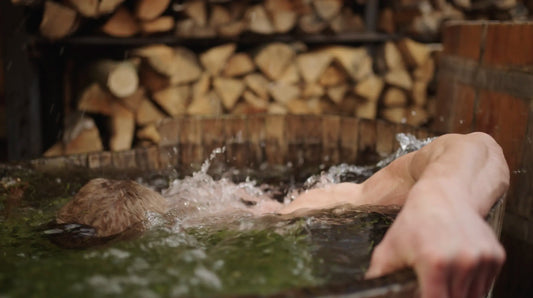One of the most effective and accessible ways to combat these issues is through breathing techniques.
These simple practices can help you regain control over your mind and body, promoting relaxation and mental clarity.
Let's explore various breathing techniques that can significantly reduce stress and anxiety.
What are breathing techniques?
Breathing techniques involve conscious control of your breath to achieve specific physiological and psychological outcomes.
Historically, these techniques have been used in various cultures and traditions, such as yoga and meditation, to promote overall well-being.
The science behind breathing techniques
Breathing techniques work by influencing the autonomic nervous system, which regulates involuntary bodily functions like heart rate and digestion.
By controlling your breath, you can activate the parasympathetic nervous system, often referred to as the “rest and digest” system, which helps to calm the body and mind and can also lower or stabilize blood pressure.
Diaphragmatic breathing, which involves the abdominal muscles, encourages full oxygen exchange and enhances the movement of the diaphragm for efficient breathing.
Benefits of breathing techniques and the relaxation response
The benefits of breathing techniques are extensive:
- Reducing stress and anxiety: By slowing down your breath, you signal your body to relax, reducing stress hormones. Abdominal breathing, also known as diaphragmatic or deep breathing, helps reduce stress and anxiety by stimulating the parasympathetic nervous system and promoting full oxygen exchange.
- Improving mental clarity: Controlled breathing increases oxygen supply to the brain, enhancing cognitive function. Breath control is essential for relaxation techniques, helping to invoke the relaxation response and improve mental clarity.
- Enhancing physical health: Proper breathing techniques can improve cardiovascular health and boost the immune system. Breathing techniques that evoke the relaxation response can lead to profound rest and calmness, reducing inflammation and contributing to overall health.
Basic breathing techniques
Diaphragmatic breathing (Abdominal breathing)
Also known as belly breathing, this technique involves deep breathing into the diaphragm rather than shallow breaths into the chest.
4-7-8 Breathing
This method involves inhaling for 4 seconds, holding the breath for 7 seconds, and exhaling for 8 seconds.
Box breathing
Also known as square breathing, this technique involves inhaling, holding, exhaling, and holding the breath again, each for 4 counts.
Advanced breathing techniques

Alternate nostril breathing
This yoga technique involves breathing through one nostril at a time to balance the body's energy channels.
Resonant or coherent breathing
This method involves breathing at a rate of about 5-6 breaths per minute to achieve a state of coherence in heart rate variability.
Pursed-lip breathing
Often used in respiratory therapy, this technique involves exhaling through pursed lips to slow down breathing and improve oxygen exchange.
How to practice diaphragmatic breathing
- Find a comfortable position: Sit or lie down comfortably.
- Place your hands: One hand on your chest and the other on your abdomen.
- Inhale deeply: Breathe in through your nose, allowing your abdomen to rise. This is also known as abdominal breathing or diaphragmatic breathing.
- Exhale slowly: Exhale through your mouth, feeling your abdomen fall.
- Repeat: Practice for 5-10 minutes daily.
How to practice 4-7-8 breathing
- Get comfortable: Sit with your back straight. Breath focus is crucial in this technique as it helps turn down the stress response and aids in concentrating on slow, deep breathing.
- Inhale: Breathe quietly through your nose for 4 seconds.
- Hold: Hold your breath for 7 seconds.
- Exhale: Exhale completely through your mouth for 8 seconds.
- Repeat: Perform this cycle 4 times, gradually increasing as you become comfortable.
How to practice box breathing
- Sit upright: Find a comfortable seated position.
- Inhale: Take deep breaths in through your nose for 4 counts.
- Hold: Hold your breath for 4 counts.
- Exhale: Exhale through your mouth for 4 counts.
- Hold: Hold your breath again for 4 counts.
- Repeat: Continue this cycle for 5-10 minutes.
How to practice alternate nostril breathing
- Sit comfortably: Find a comfortable seated position.
- Close right nostril: Use your right thumb to close your right nostril.
- Inhale left: Inhale through your left nostril.
- Switch and hold: Close your left nostril with your right ring finger and hold your breath.
- Exhale right: Exhale through your right nostril.
- Repeat: Continue for several cycles, alternating nostrils.
How to practice resonant breathing
- Find a quiet place: Sit comfortably in a quiet space.
- Inhale slowly: Breathe in through your nose for about 5-6 seconds.
- Exhale slowly: Exhale through your nose for about 5-6 seconds.
- Repeat: Practice this for 10-20 minutes daily to achieve coherence.
How to practice Pursed-lip breathing

- Relax your neck and shoulders: Sit comfortably and relax.
- Inhale: Breathe in through your nose for 2 counts.
- Purse your lips: Pucker your lips as if you’re about to blow out a candle.
- Exhale: Exhale slowly through pursed lips for 4 counts.
- Repeat: Continue this technique for 5-10 minutes.
Incorporating breathing techniques into daily routine
- Morning Routine: Start your day with a few minutes of diaphragmatic breathing.
- Work Breaks: Use 4-7-8 breathing during short breaks to reset and recharge.
- Evening Relaxation: Wind down with resonant breathing before bed.
Breathing techniques for different situations
Acute stress relief: Use box breathing during high-stress moments for quick relief. Avoid chest breathing, as it can exacerbate stress by limiting oxygen exchange and increasing physical sensations like dizziness and muscle tension.
Long-term anxiety management: Incorporate alternate nostril breathing into your daily routine for ongoing anxiety management.
Utilize relaxation techniques such as breathing exercises, meditation, and yoga to promote profound rest and counter the stress response.
Personal experiences and testimonials
Many individuals have shared their success stories of using breathing techniques to manage stress and anxiety.
From improved sleep to reduced panic attacks, these techniques have made a significant difference in their lives. Experts also advocate for the use of breathing exercises as a complementary approach to traditional treatments.
Breathing techniques are powerful tools for reducing stress and anxiety. By practicing these methods regularly, you can improve your mental and physical health, enhance your mood, and boost your overall well-being.
Start incorporating these techniques into your daily routine and experience the benefits for yourself.
How long should you practice each day? Aim for at least 5-10 minutes daily, gradually increasing as you become more comfortable.
Can breathing techniques help with panic attacks? Yes, techniques like 4-7-8 breathing can be particularly effective during panic attacks.
Are there any risks associated with breathing techniques? Generally, breathing techniques are safe. However, if you feel lightheaded or dizzy, stop and resume normal breathing.



